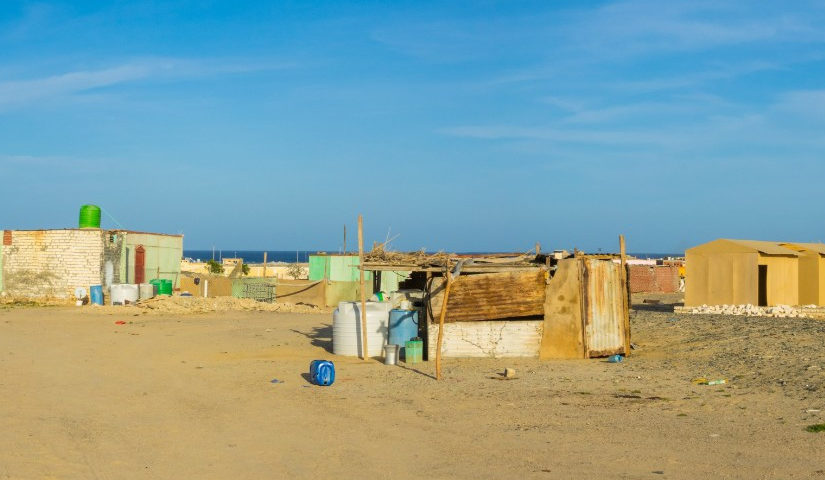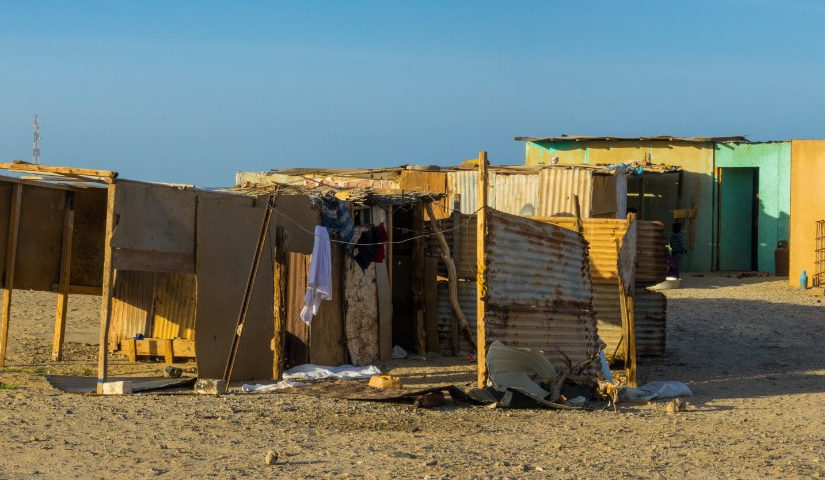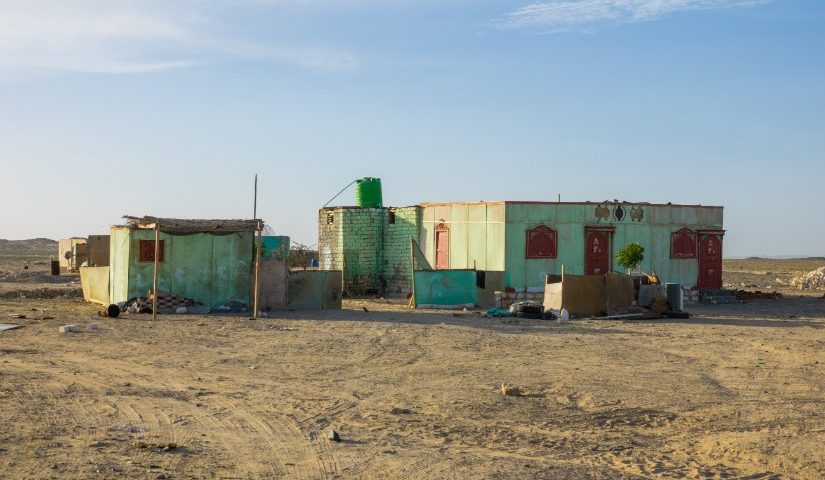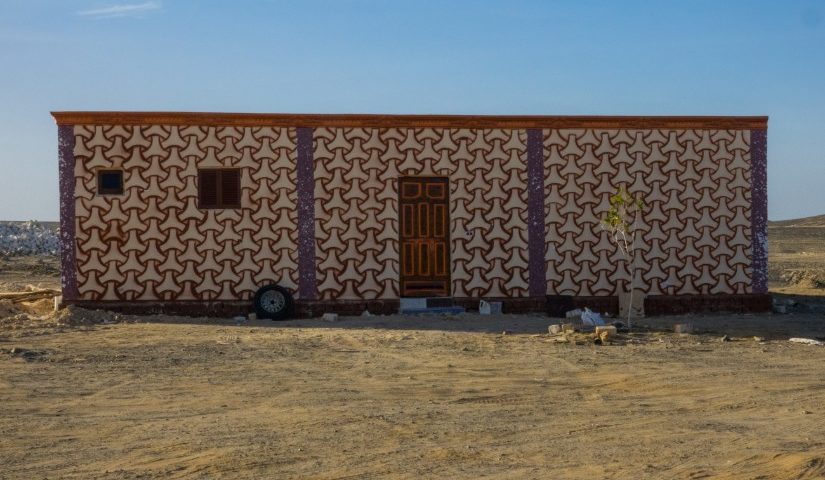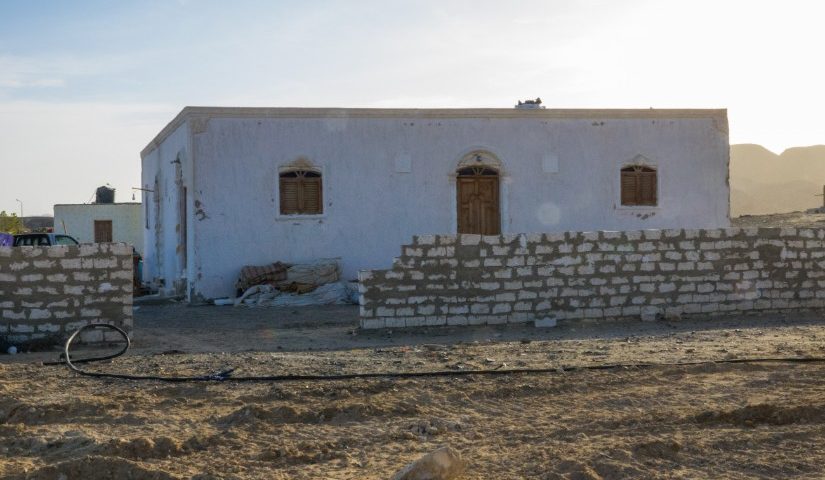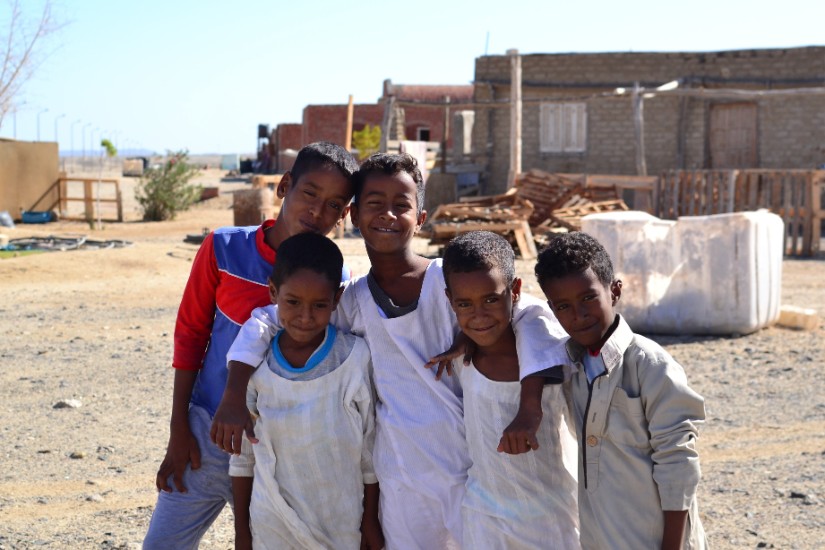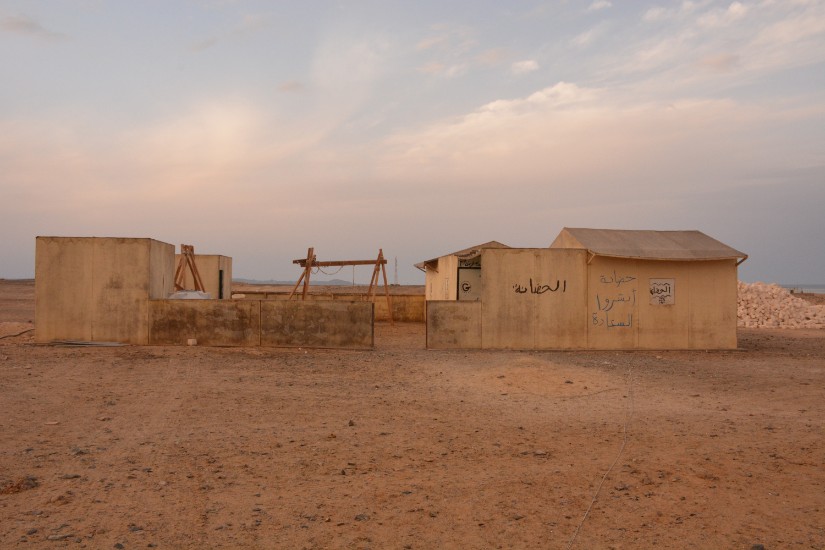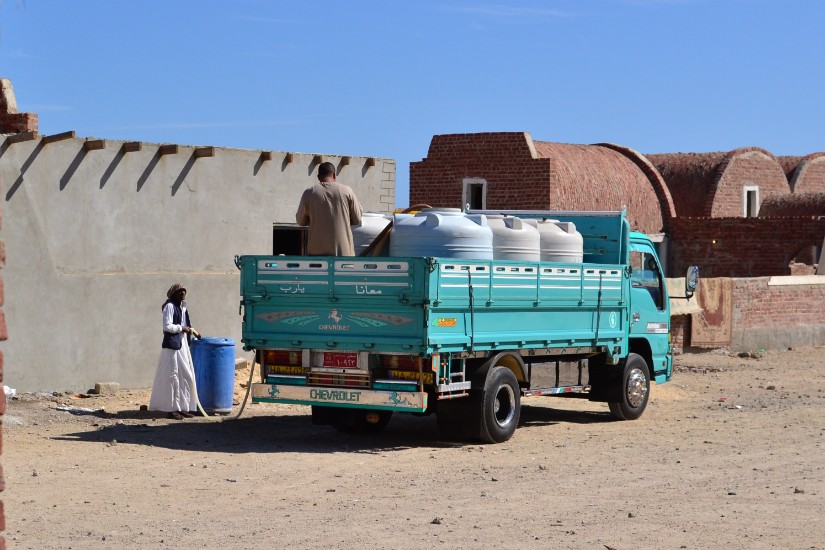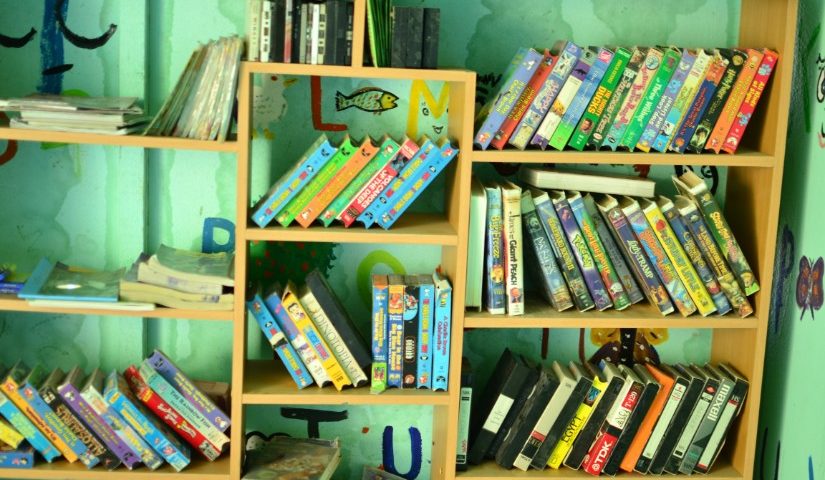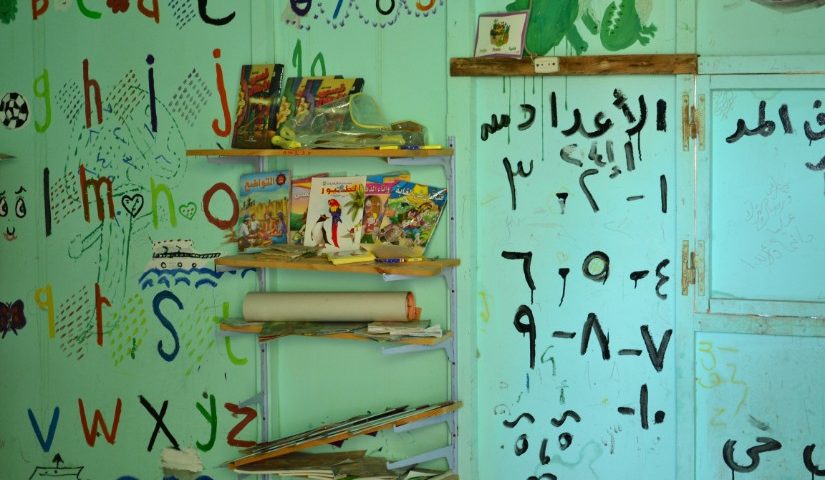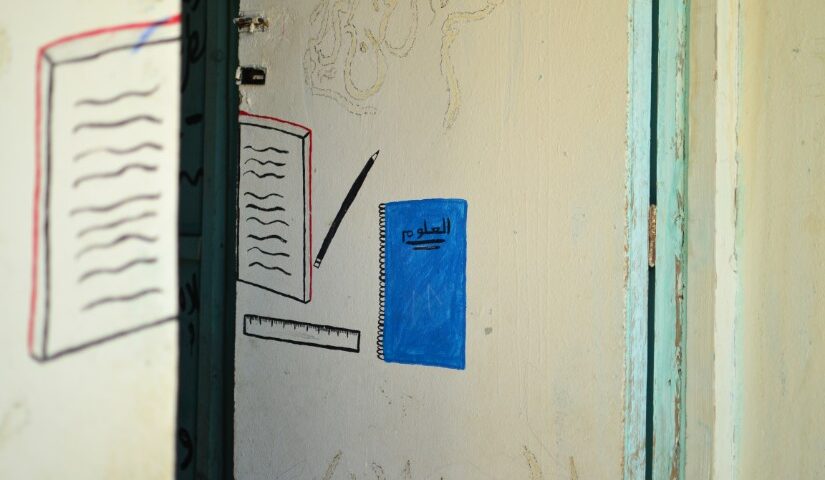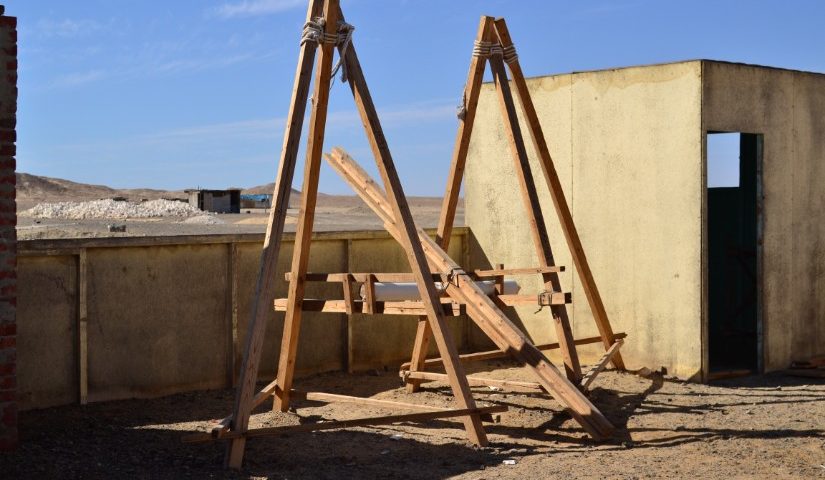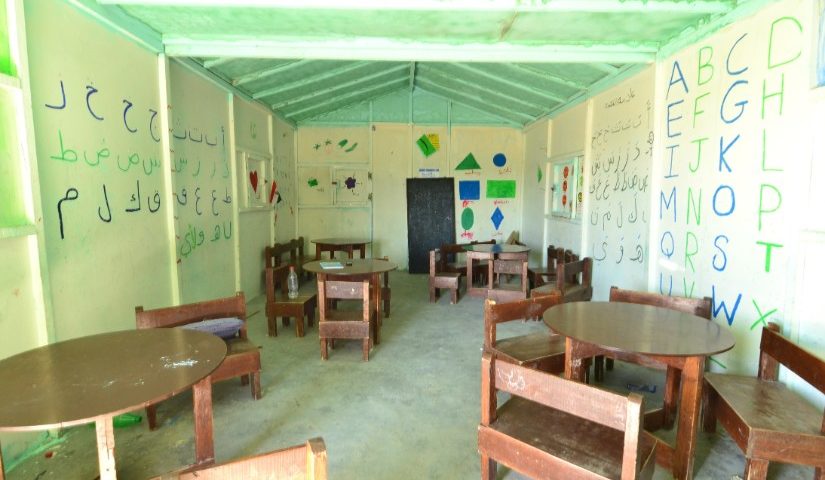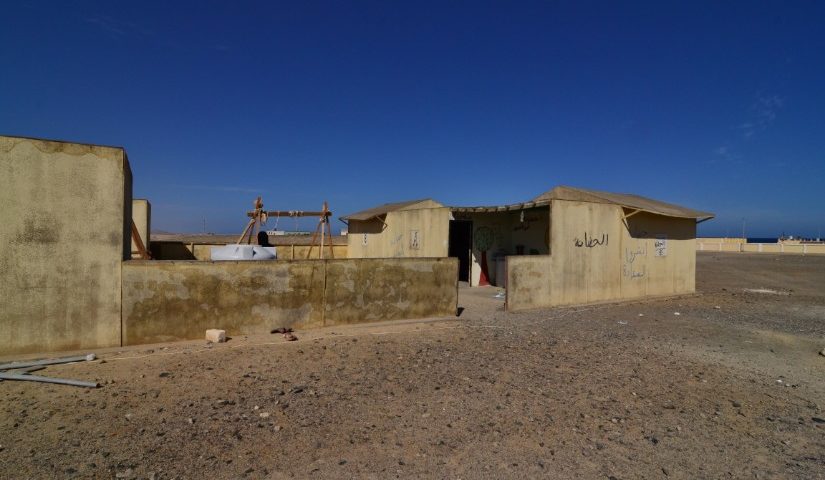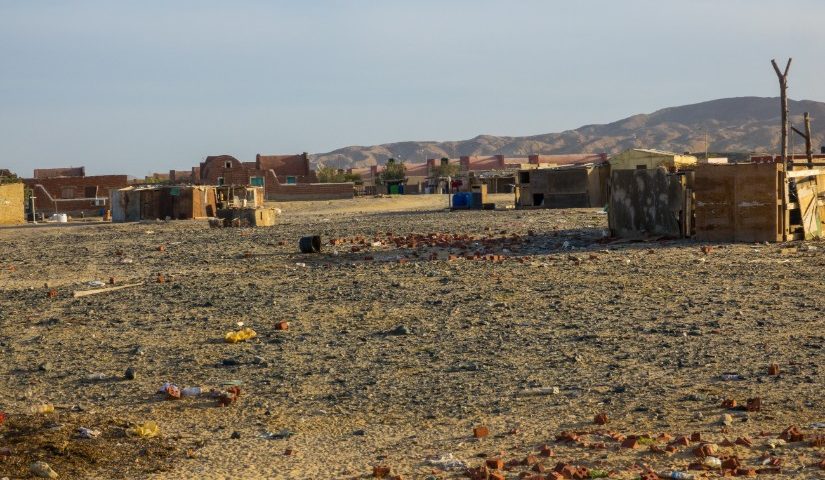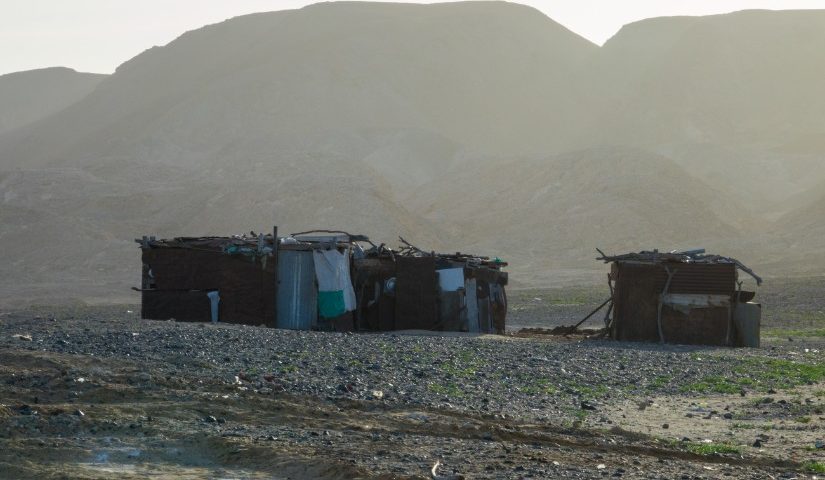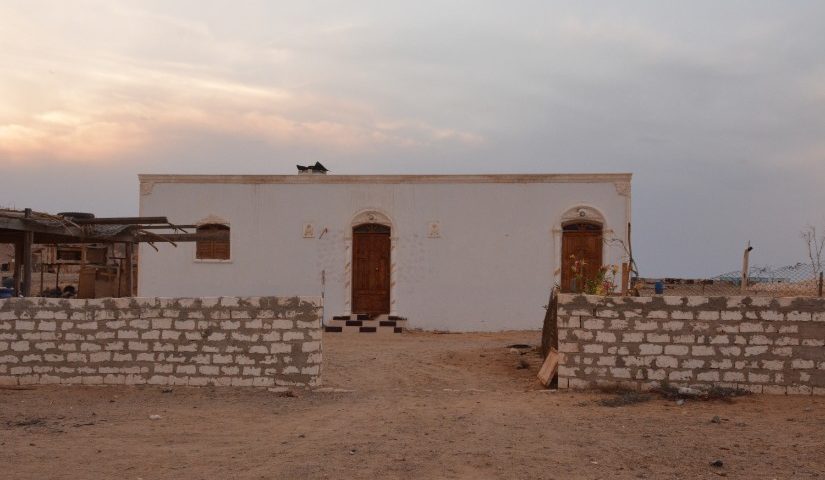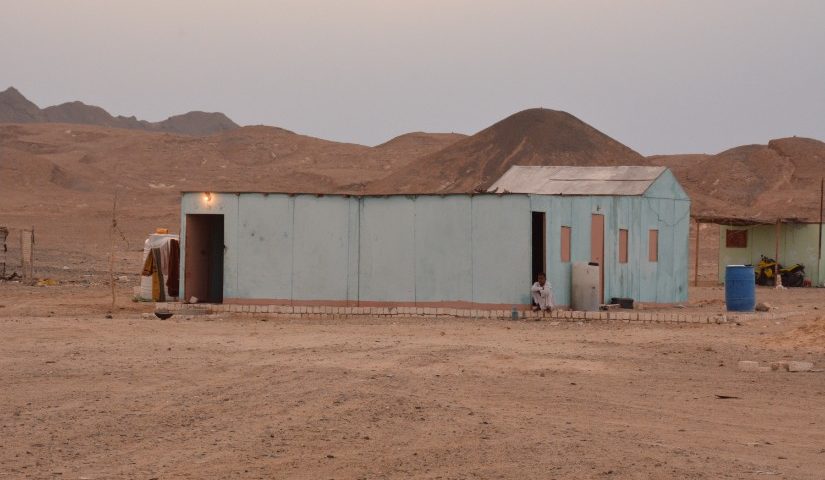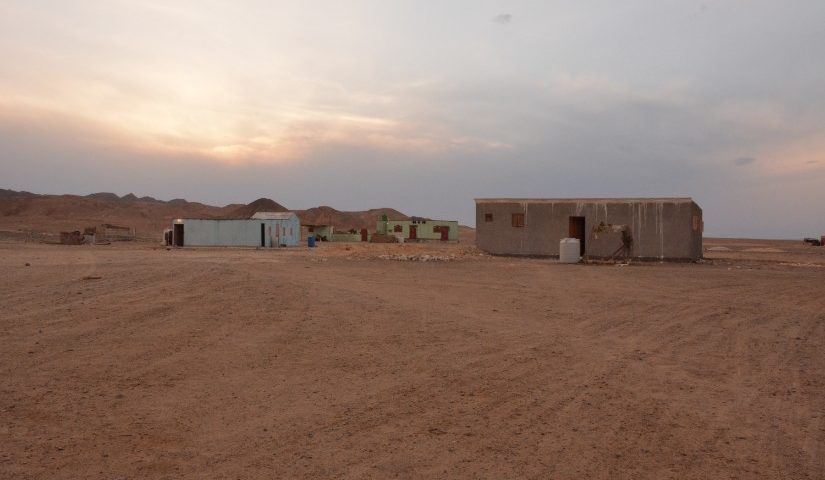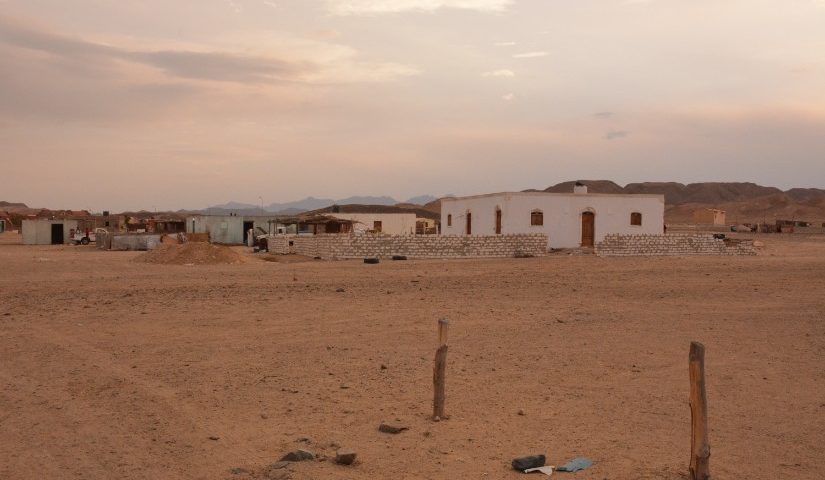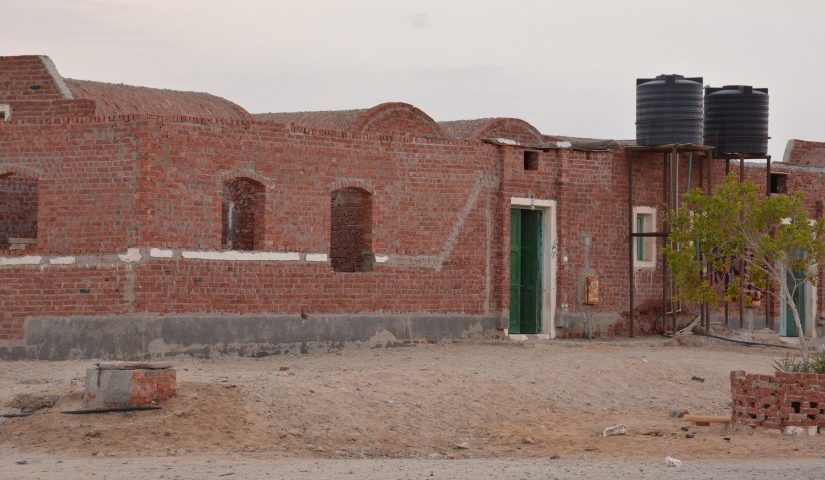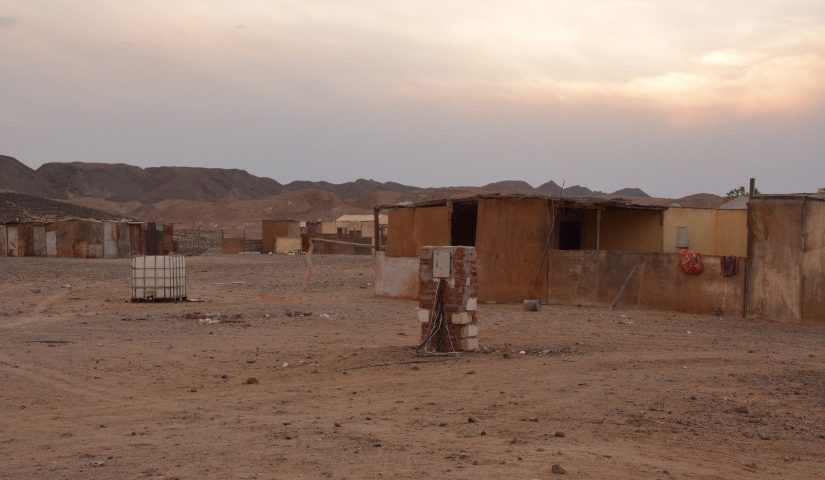Abu Ghosoun is the second largest village within the WGNP. It was practically founded around the El-Nasr Mining Company across the Red Sea Coastal Highway. The company and its infrastructure predate the village by decades. The old mosque and school, adjacent to the company port and employee housing, were originally meant to cater to the employees and their families’ needs. These subsequently became the heart of Abu Ghosoun Village.
ABU GHOSOUN DEMOGRAPHICS
- Abu Ghosoun is comprised of roughly 150 households occupied by approximately 750 inhabitants.
- There are currently 44 government-issued houses built, another 50 are being constructed, and the remaining 50 households live in traditional houses.
- Only 34 of the approximately 750 inhabitants are formally employed and have a secure steady income.
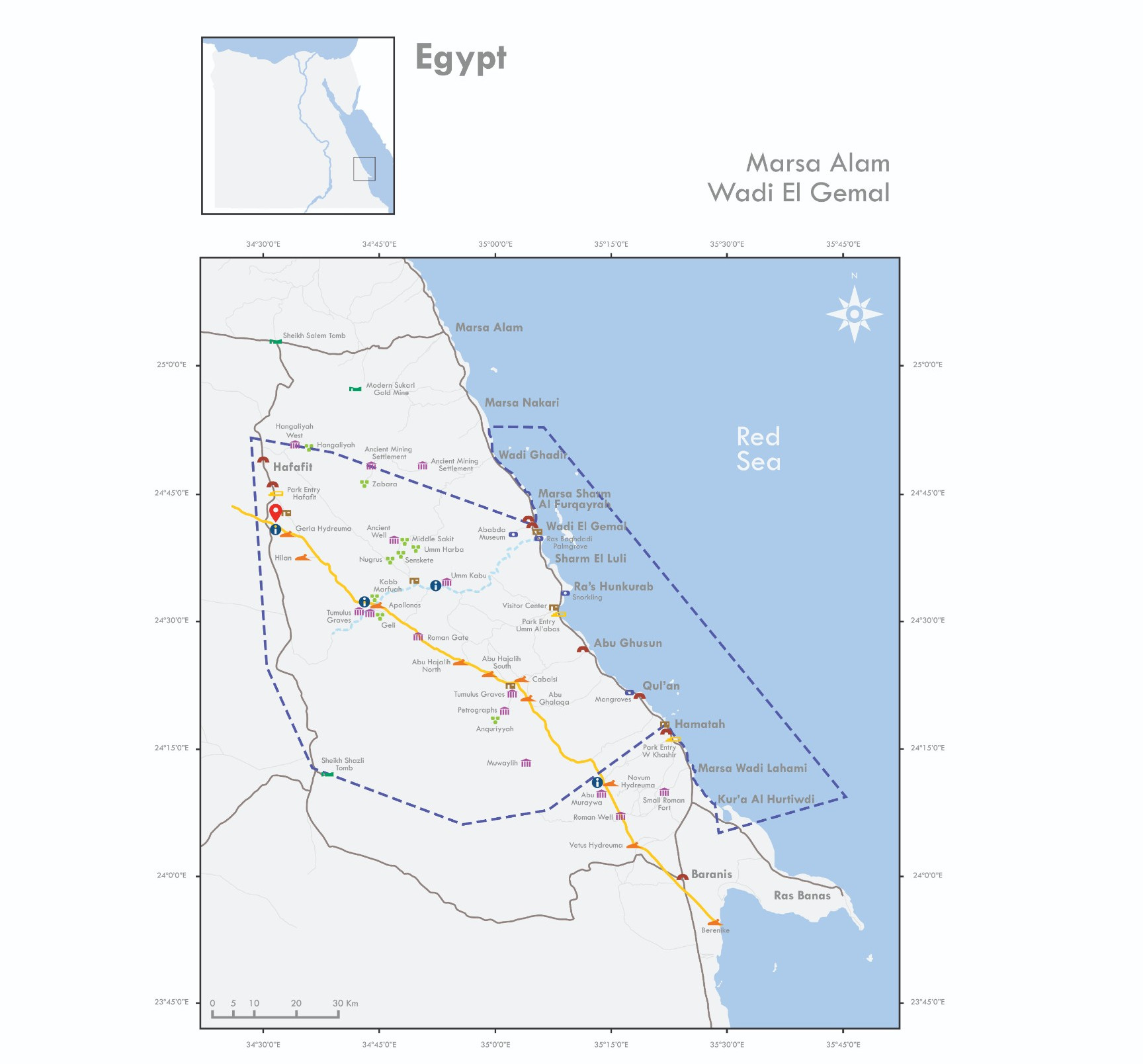
Abu Ghosoun inhabitants are mostly originally herders and shepherds. Like the rest of the local community, a number of them does resort to the sea and turn to fishing when necessary. The older generation of the fathers and grandfathers have found employment in El-Nasr Mining Company. The pensions these receive now, in addition to the salaries of those formally employed, present the sole source of steady income for the community members.
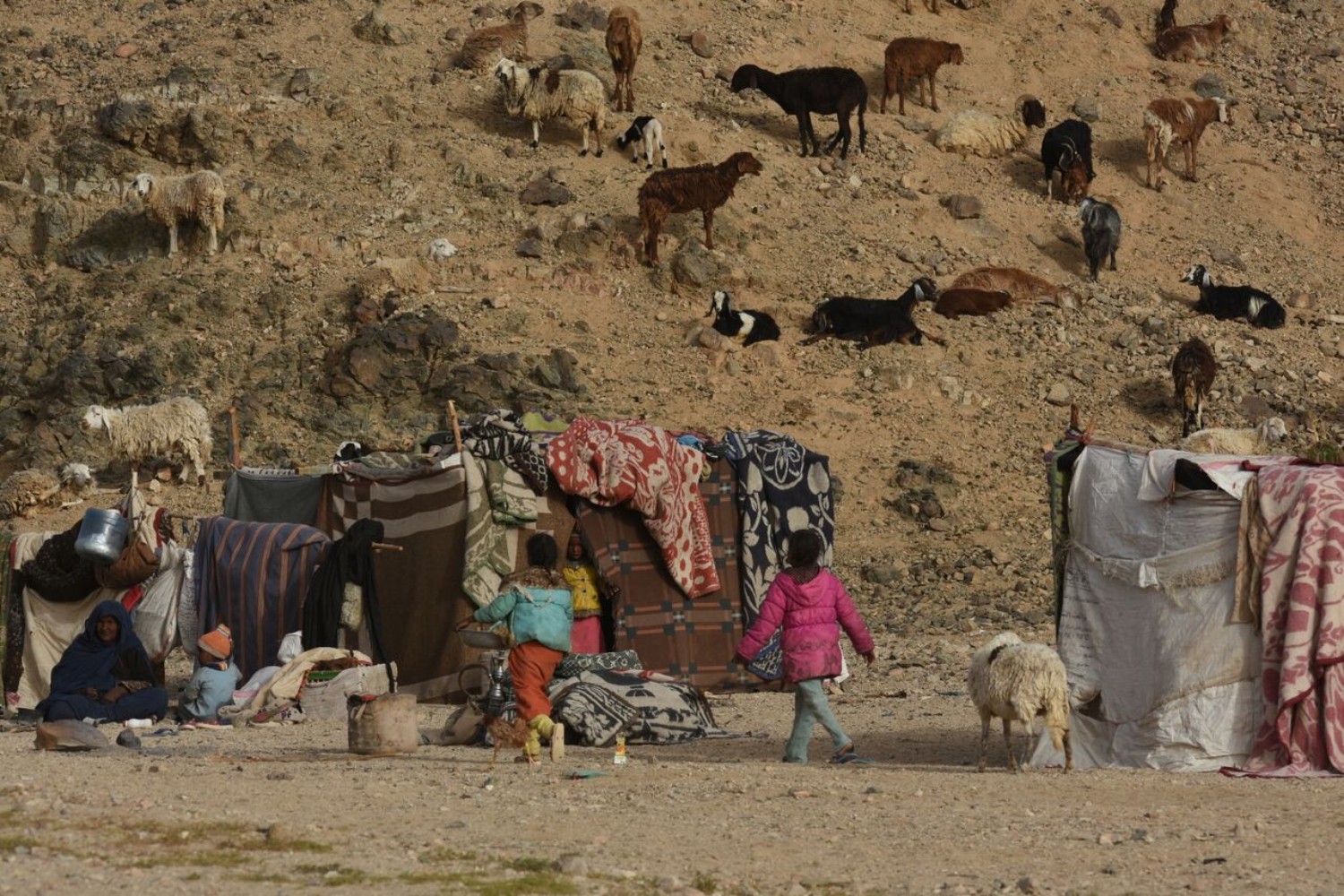
By: Gianni Bodini
INFRASTRUCTURE & SERVICES IN ABU GHOSOUN
Beyond the Coastal Highway there are no paved roads. The school in Abu Ghosoun was built in 1973. The large mosque, arguably the cornerstone of the village, which started attracting Ababda to settle in its vicinity, was built some time around the mid-eighties.

By: Manfred Bortoli
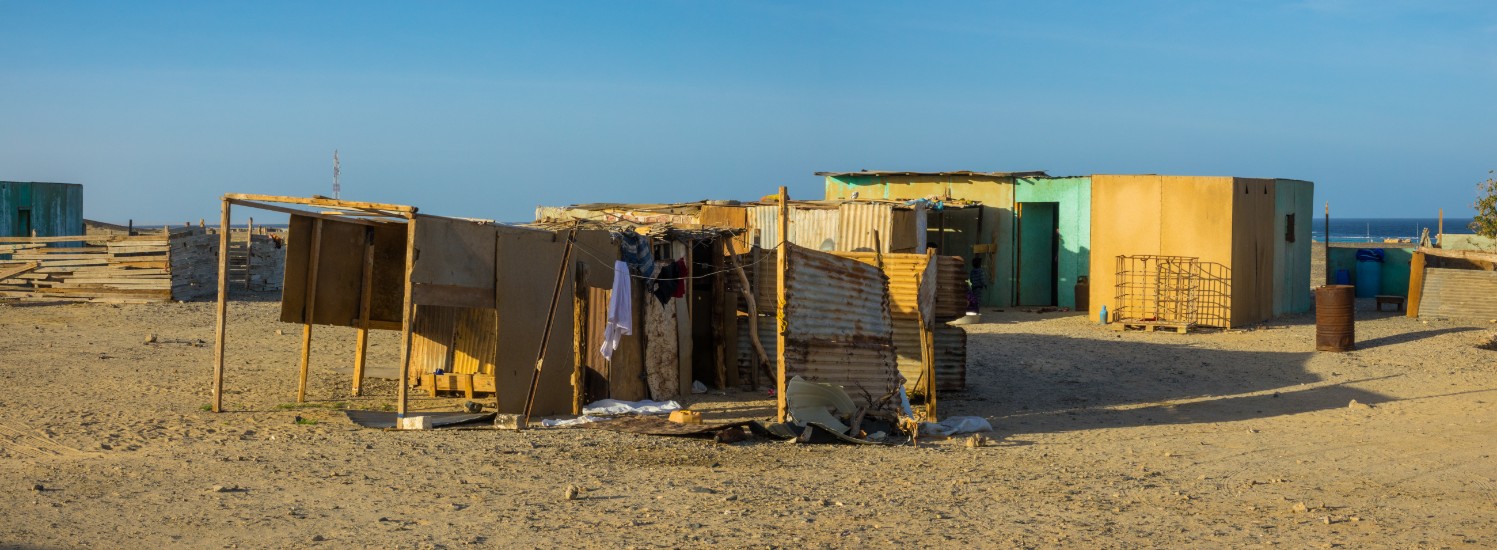
By: Manfred Bortoli
In 2004, government-issued housing was built to replace the more rudimentary traditional houses. It is made up of only three rows of red brick homes and no further building permits are granted to the residents. Thus creating a housing crisis for households who need to expand. Other than the houses, the major elements of built environment are the mosque, school, and the more recently built youth center.
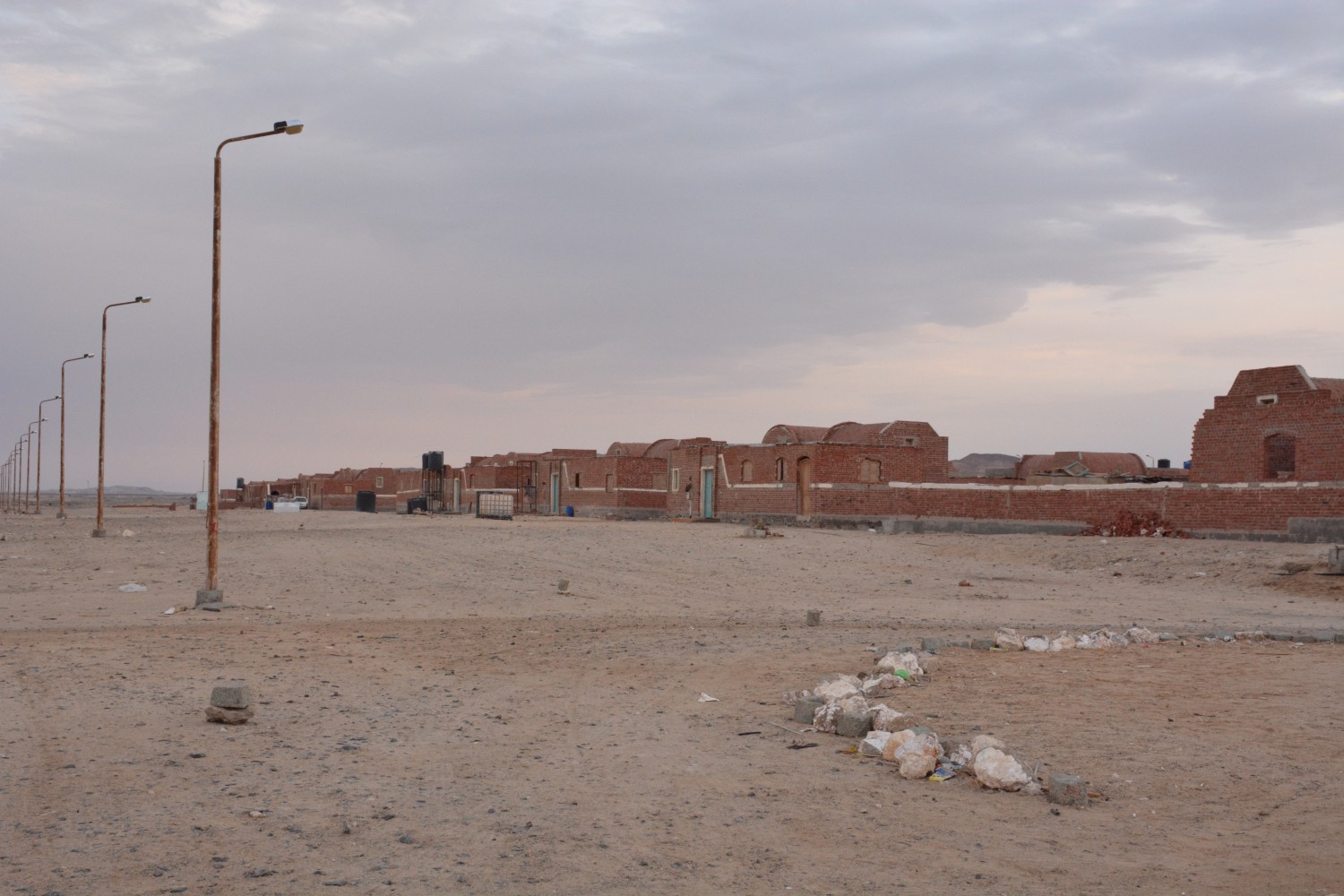
By: Samah Abaza
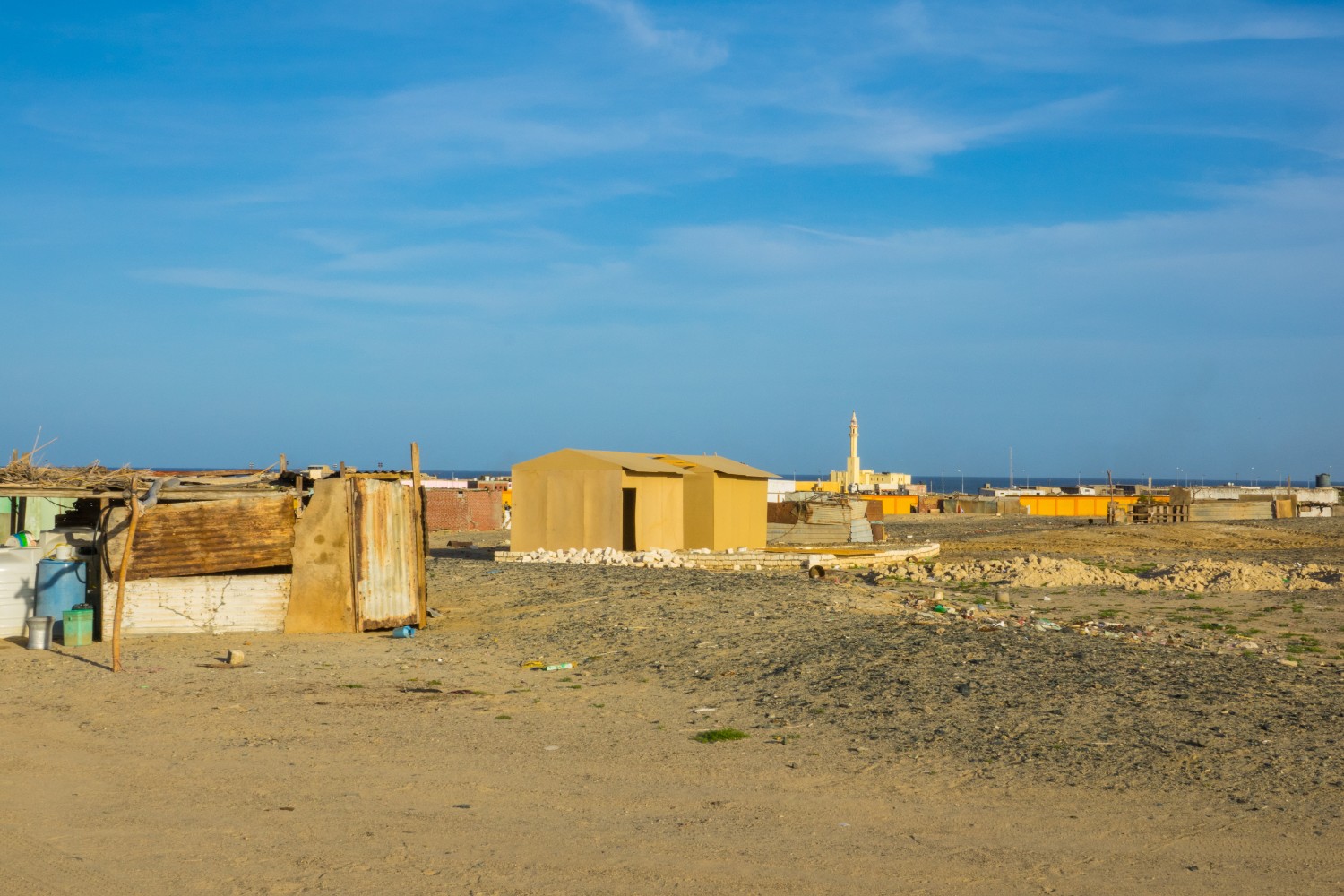
By: Manfred Bortoli
The school had only offered preparatory-level education up to 2016, when the secondary level was introduced. It is the only and nearest secondary-level education institution available to the local community in WGNP. The next closest one being the school in Marsa Alam City, which is 55 km, 85 km, 100 km, and 115 km away from Wadi El-Gemal, Abu Ghosoun, Qulan, and Hamata respectively.
By: Reem Labib
There is a kindergarten that was built and furnished by HEPCA in the scope of the LIFE project around five years ago. It is constructed from wood boards.The kindergarten currently serves about 13 children, who are taught by educated village women who volunteer to prepare them for school. These teachers receive no regular pay or compensation, but parents of the attending children pay a monthly contribution each according to their means.
By: Samah Abaza
Also in the scope of LIFE project, and adjacent to the kindergarten structure, a workshop was built for traditional crafts and arts. It is a wood structure designed as a space where women can gather to weave traditional carpets and make bead accessories. Products are then sold to tourist centers or shop suppliers in Cairo and Alexandria.
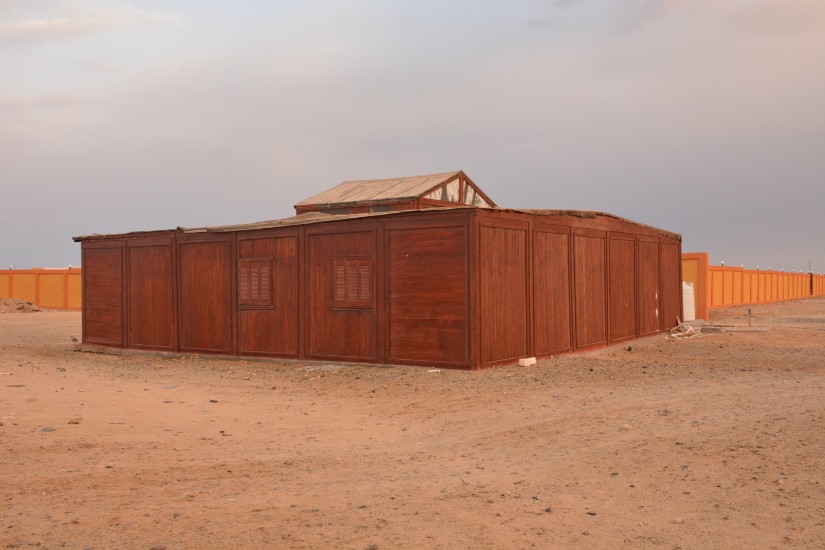
By: Samah Abaza
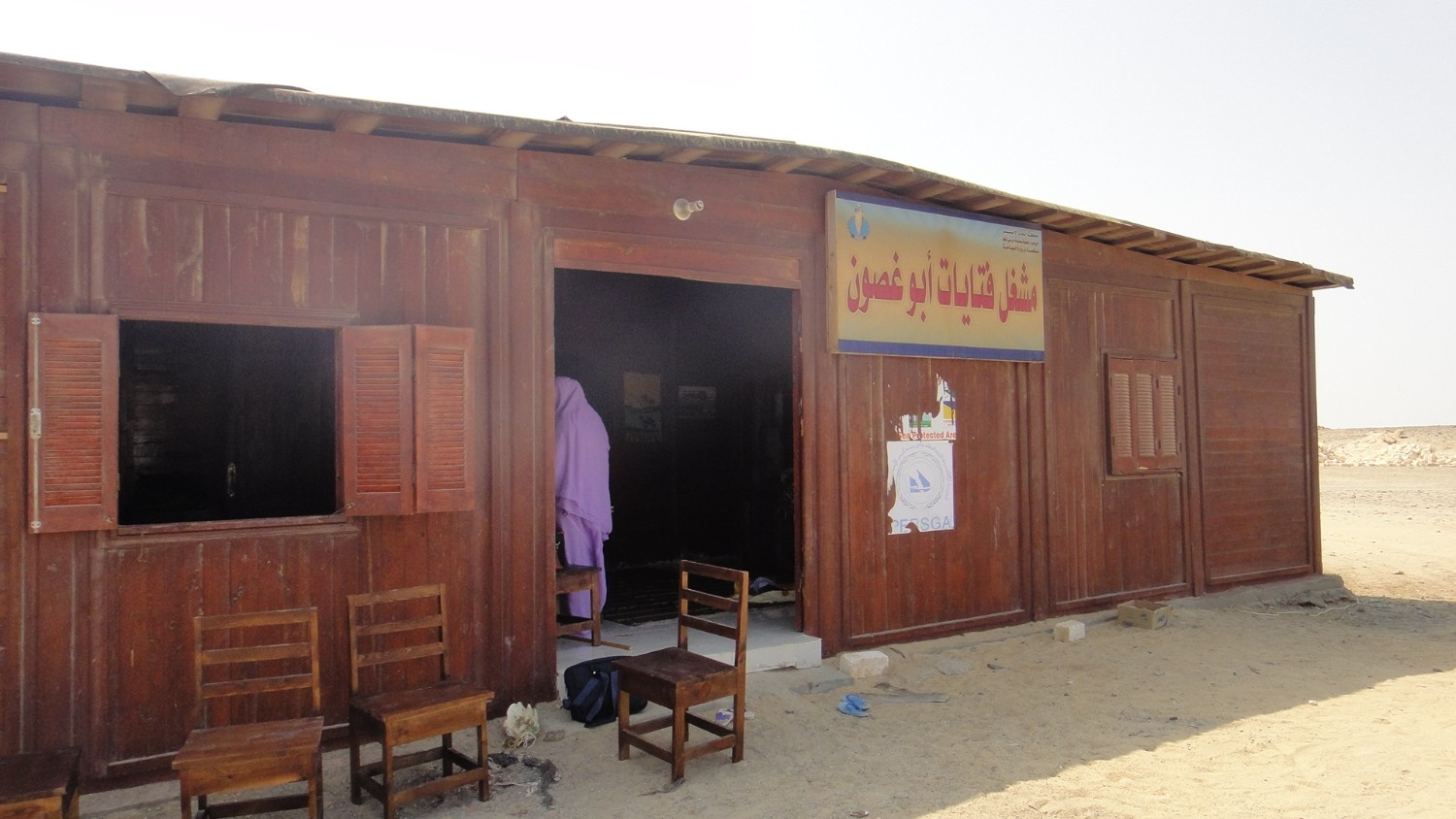
By: Samah Abaza
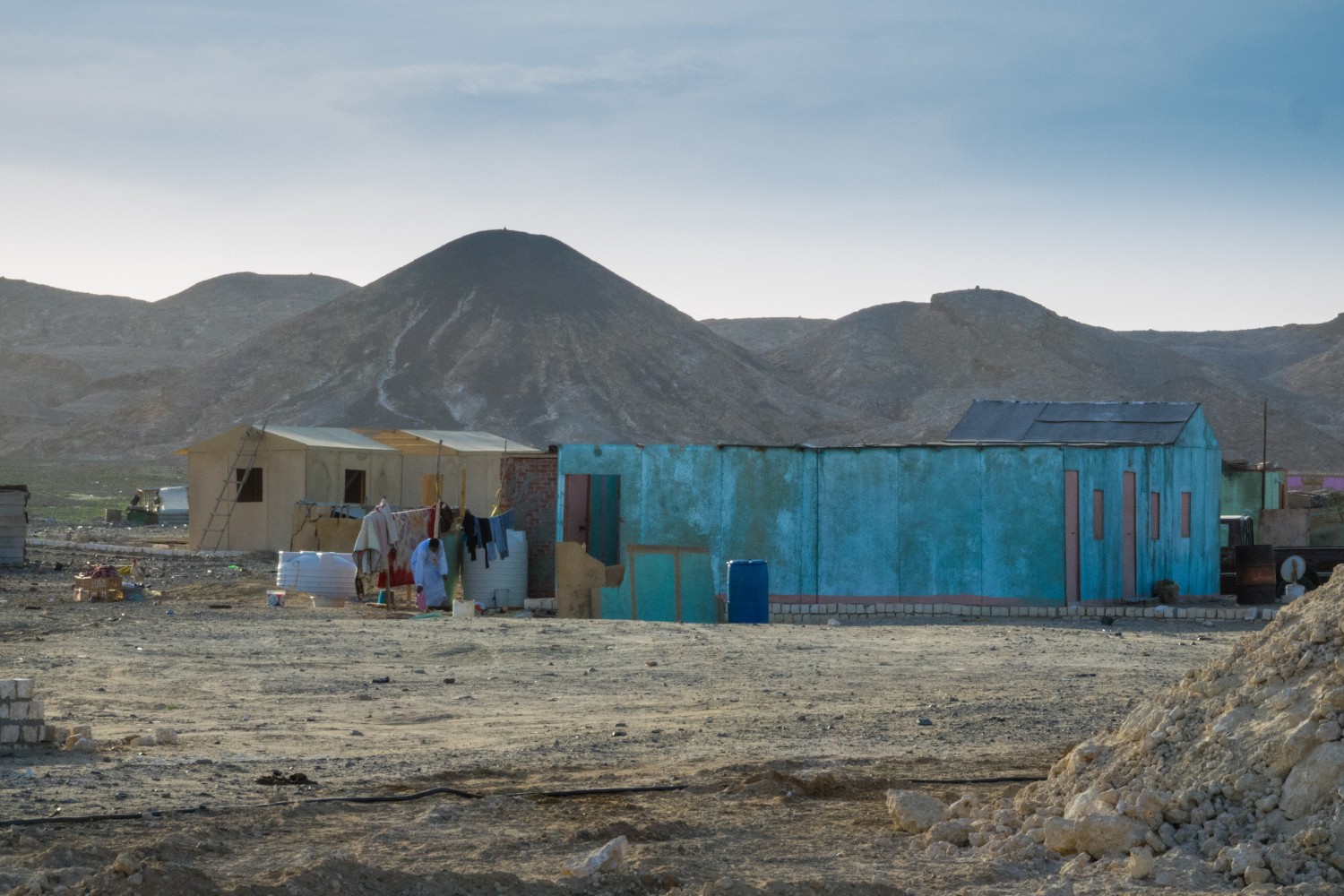
By: Samah Abaza
The source of electricity is generators operated by the Marsa Alam City Council during the day, and by El-Nasr Mining Company during the night. Wastewater is discharged into septic tanks, which are drained by Marsa Alam City when needed.
Water desalination units provide grey water, while drinking water is only available via trucks that transport it all the way from Aswan. Abu Ghosoun community members have no other access to potable water, which they buy at the price of 55 EGP per barrel.
By: Reem Labib
There are no healthcare facilities whatsoever in Abu Ghosoun. No hospital or clinic. The simplest procedure such as suturing a cut requires a visit to the Marsa Alam Hospital, which is the nearest hospital and is about a 90-minute drive.
ABU GHOSOUN COMMUNITY CONCERNS
Unemployment and lack of livelihood sources
Most pressingly is the high level of unemployment which results in widespread poverty, especially with the increased urbanization and slow demise of the traditional self-sufficient lifestyle.A lot of community members welcome formal regular employment in WGNP offices, the City Council, or in El-Nasr Company. Employability in the tourist resorts in WGNP is contingent on suitability of the positions to the Ababda character and culture. In all cases, hotels only ever offered them temporary and lowly positions, e.g. as guards to the construction sites.
But Ababda feel they have a lot to offer the tourism business, which currently almost completely bypasses them. Ideally, they want to start community-managed small scale projects that showcase their environment and culture, along the lines of Qulan.
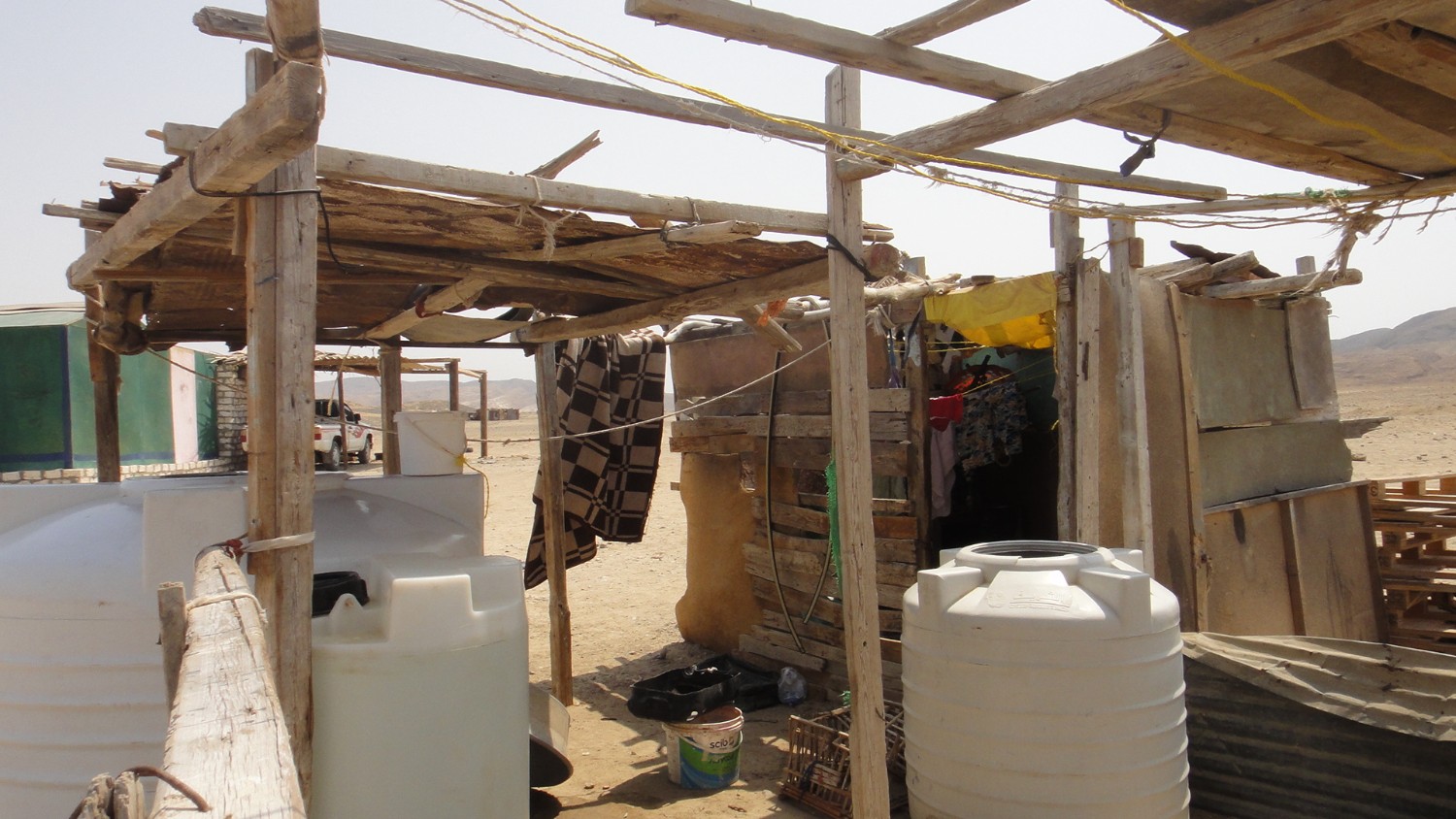
By: Samah Abaza
Scarcity of potable water
There are many aspects to the drinking water shortage problem, which is delivered to the villages by trucks
- There is no accounting for actual community needs for potable water. The truck carries the water from Aswan and drives up along the coastline from the south. Often, by the time it reaches Abu Ghosoun, there is not enough water to meet the needs of everybody.
- The delivery schedule is irregular. There are no known delivery times or days the community can count on. They never know when the next delivery will take place.
- The water price is not readily affordable to all community members. Sometimes households can’t afford the water, or to buy enough to guarantee against eventual shortage. This problem is exacerbated by the lack of a known delivery plan.
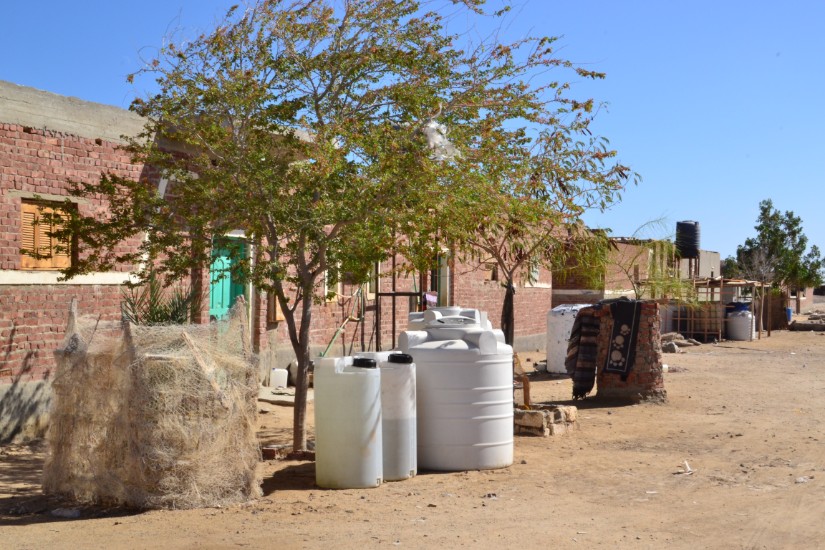
By: Reem Labib
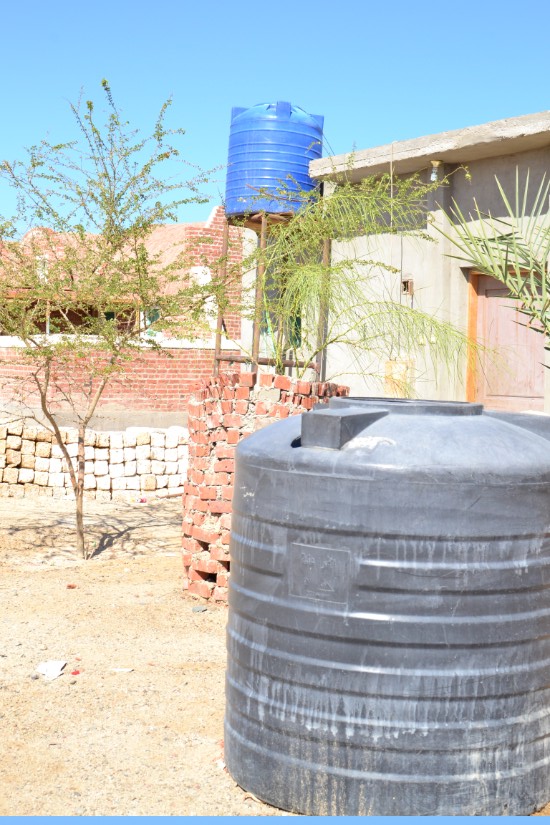
By: Reem Labib
Inadequate quality of education and educational facilities
In general, the women are more invested in the education of the children. They complain about uninvolved teachers in the classroom, and the lack of school preparation.
The kindergarten initially received furnishings and education material. However, there was no upkeep or follow up. Now most of the furnishings need upgrade and maintenance. Furthermore, there are no qualified teachers to work there. Local educated women are voluntarily using the building to prepare the children for school. Mainly by teaching them the alphabet and how to use the pen.
The school is equally poorly equipped, with no computers available.
Lack of healthcare facilities
Any doctor’s visit requires a 100 km long trip to Marsa Alam, contingent upon the availability of a car. Emergencies are difficult to handle under such circumstances. And pregnant women often get into labour and give birth on the road before reaching the hospital.
Lack of community services
There is a youth center available that has a football court, library, and a showroom, however it needs a lot of improvement in terms of operations and equipment. This youth center plays a critical role in organizing social events, and preservation of Ababda heritage and culture. It could also be used as a social and community hub, however it requires proper planning and innovative management.
Lack of urban planning and adequate infrastructure
The village lacks a master urban plan; therefore homes are built haphazardly without following a specific building style/design. Moreover, there is no sewage or water network. It is important to develop a master urban plan for the village through a participatory approach between the local people, planners, and the official authorities.

